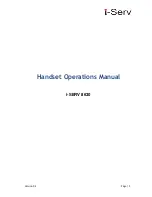
GB
I
F
D
EINLEITUNG
Der 3-Wege-Kopf MH293D3-Q2 ist ideal für DSLR-Kameras. Durch die Klapp-
griffe ist er besonders für reisende Fotografen geeignet.
WESENTLICHE EIGENSCHAFTEN
• Verstellbare Griffe sparen Platz beim Transport
• Ergonomisch gestaltete Bedienungsgriffe
• Schnellwechselplatte
• 3 Libellenblasen (gehört nicht zum MK290LTA3-3W)
EINSTELLUNGEN
ANBRINGUNG DES KOPFES AN EIN STATIV
Bringen Sie die Hebel in die Arbeitsstellung:
- Lösen Sie den Handgriff "B", indem Sie ihn gegen den Uhrzeigersinn drehen.
- Bringen Sie den Handgriff "B" in seine Arbeitsstellung, wie in Abbildung 1
gezeigt.
- Ziehen Sie den Handgriff "B" fest, indem Sie ihn im Uhrzeigersinn drehen.
Das 3/8”-Innengewinde des Kopfes ("E") passt in jedes Außengewinde von
Standard-Stativen. Die Griffe können dazu benutzt werden, den Kopf am Stativ
festzuziehen. Falls die Stativplatte über Schrauben zur Verhinderung der Rota-
tion verfügt, können diese am Boden des Kopfes befestigt werden.
ENTFERNEN DER SCHNELLWECHSELPLATTE VOM KOPF
Drehen Sie den Hebel "P" vollständig in Pfeilrichtung, um die Platte "L" zu
lösen.
ANBRINGUNG DER SCHNELLWECHSELPLATTE AN EINE KAMERA
Die Platte "L" wird mit der Schraube "M", die in das ¼” -Innengewinde an der
Unterseite des Kameragehäuses passt, an der Kamera angebracht. Richten Sie
das Kameraobjektiv mit dem “LENS” –Pfeil (“OBJEKTIV”), der sich am Boten
der Platte "L" befindet, aus. Den Ring "Q" benötigen Sie, um die Platte am
Kamerakörper anzubringen. Vor Gebrauch sollte die Platte sicher, ABER OHNE
ANWENDUNG VON GEWALT, an der Kamera befestigt werden. Ein zu starkes
Anziehen kann das Kameragewinde beschädigen.
ANBRINGUNG DER KAMERA AM KOPF
UND
Drücken Sie den Ring "Q" (Abbildung 3) herunter, so dass er flach auf der
Platte "L" liegt.
Öffnen Sie den Hebel "P" und halten Sie ihn geöffnet, während die Kamera
durch Einrasten der Kameraplatte "L" oben am Kopf angebracht wird, wie in
Abbildung 4 gezeigt.
Lassen Sie den Hebel "P" wieder los und schließen Sie ihn, um
sicherzugehen, dass die Platte "L" fest sitzt und die Kamera sicher am
Kopf angebracht ist (Abbildung 5).
ENTFERNEN DER KAMERA VOM KOPF
Um die Platte "L" zu entfernen, bewegen Sie den Hebel "P" bis zum Anschlag
in Richtung des Pfeils.
GEBRAUCH UND POSITIONIERUNG DES KOPFES
Handgriff "A" steuert und sichert die Schwenk- und Neigefunktion.
Handgriff "B" steuert und sichert die Nivellierungsbewegungen.
Drehen Sie den Griff oder die Griffe gegen den Uhrzeigersinn, um den Kopf
zu lösen und die Kamera in die gewünschte Position zu drehen. Fixieren Sie
den Kopf und die Kamera in dieser Position, indem Sie den jeweiligen Griff im
Uhrzeigersinn drehen.
EINKLAPPEN DER HEBEL FÜR DEN TRANSPORT
Klappen Sie die Hebel für den Transport kompakt zusammen:
- Lösen Sie den Handgriff "B", indem Sie ihn gegen den Uhrzeigersinn drehen.
- Klappen Sie den Handgriff "B", wie in Abbildung 8 gezeigt, ein.
- Ziehen Sie den Handgriff "B" fest, indem Sie ihn im Uhrzeigersinn drehen.
1
2
3
4
5
6
7
8
INTRODUCTION
La tête 3D MH293D3-Q2 est idéale pour les appareils reflex à fonctions vidéo.
Ses poignées repliables en font l’outil idéal des photographes itinérants.
CARACTÉRISTIQUES PRINCIPALES
• Poignée repositionnable pour optimiser l’espace durant le transport.
• Poignées de réglage ergonomiques.
• Plateau rapide
• 3 niveaux à bulles (non inclus dans le kit MK290LTA3-3W)
INSTALLATION
MONTAGE DE LA TÊTE SUR UN TRÉPIED
Placez les leviers en configuration de travail :
- Desserrez la poignée "B" en la tournant dans le sens inverse des aiguilles
d’une montre.
- Placez la poignée "B" en position de travail comme indiqué sur la figure 1.
- Serrez la poignée "B" en la tournant dans le sens des aiguilles d’une montre.
Le filetage femelle 3/8” "E" s’adapte à toute vis 3/8” de trépied standard. Les
poignées peuvent être utilisées pour serrer la tête sur le trépied. Si le plateau
du trépied comporte des vis anti-rotation, celles-ci peuvent être vissées à la
base de la tête.
RETRAIT DU PLATEAU RAPIDE DE LA TÊTE
Orientez entièrement le levier "P" en direction de la flèche pour libérer le
plateau "L".
FIXATION DU PLATEAU RAPIDE À L’APPAREIL PHOTO
Le plateau "L" est vissé à l’appareil photo au moyen de la vis "M", qui s’adapte
au filetage femelle ¼” situé sur la partie inférieure du boîtier de l’appareil photo.
Placez la flèche “LENS”, présente sous le plateau "L", dans le sens de l’objectif
de votre appareil photo. L’anneau "Q" permet de visser le plateau au boîtier
de l’appareil photo; avant toute utilisation, le plateau doit être vissé fermement
au boîtier, toutefois SANS SERRAGE EXCESSIF risquant d’endommager le
filetage du boîtier de l’appareil photo.
FIXATION DE L’APPAREIL PHOTO À LA TÊTE
ET
Rabaissez l’anneau "Q" (fig. 3) de sorte qu’il soit bien à plat contre le plateau "L".
Ouvrez le levier "P" et maintenez-le ouvert pour pouvoir fixer l’appareil photo
en insérant le plateau "L" en butée sur la plaque supérieure de la tête comme
indiqué sur la figure 4.
Dégagez le levier "P" et poussez-le pour le refermer en vous assurant
que le plateau "L" est maintenu fermement en place et que l’appareil
photo est bien fixé à la tête (figure 5).
RETRAIT DE L’APPAREIL PHOTO DE LA TÊTE
Pour retirer le plateau "L", actionnez le levier "P" entièrement en direction de la
flèche.
UTILISATION ET POSITIONNEMENT DE LA TÊTE
La poignée "A" contrôle et verrouille à la fois les mouvements panoramiques et
d’inclinaison.
La poignée "B" contrôle et verrouille les mouvements de mise à niveau.
Tournez la ou les poignées dans le sens inverse des aiguilles d’une montre
pour desserrer la tête et permettre à l’appareil photo d’être orienté dans la
position souhaitée. Verrouillez la tête et l’appareil photo en position en tournant
la ou les poignées dans le sens des aiguilles d’une montre.
REPLI DES POIGNÉES POUR LE TRANSPORT
Placez les leviers en configuration compacte pour le transport :
- Desserrez la poignée "B" en la tournant dans le sens inverse des aiguilles
d’une montre.
- Placez la poignée "B" en position repliée comme indiqué sur la figure 8.
- Serrez la poignée "B" en la tournant dans le sens des aiguilles d’une montre.
1
2
3
4
5
6
7
8
INTRODUZIONE
La testa a tre movimenti MH293D3-Q2 è ideale per le fotocamere reflex digitali.
Le leve pieghevoli la rendono particolarmente adatta per i fotografi in viaggio.
CARATTERISTICHE PRINCIPALI
• Leva riposizionabile per ottimizzare lo spazio durante il trasporto
• Impugnature ergonomiche
• Piastra rapida
• 3 livelle a bolla (non incluse nel kit MK290LTA3-3W)
PREPARAZIONE
MONTAGGIO DELLA TESTA SU UN TREPPIEDI
Muovere le leve sulle rispettive posizioni operative:
- Allentare l’impugnatura "B" ruotandola in senso antiorario
- Muovere l’impugnatura "B" portandola in posizione operativa, come mostrato
in fig. 1
- Stringere l’impugnatura "B" ruotandola in senso orario
La filettatura femmina da 3/8” "E" della testa si adatta a qualsiasi vite maschio
standard da 3/8” di un treppiedi. Accertarsi di avere stretto bene la testa sul
treppiedi. Se la piastra del treppiedi dispone di viti antirotazione, queste si
possono stringere contro la base della testa.
RIMOZIONE DELLA PIASTRA RAPIDA DALLA TESTA
Ruotare la leva "P" fino in fondo nella direzione della freccia per liberare la
piastra "L".
FISSAGGIO DELLA PIASTRA RAPIDA AD UNA FOTOCAMERA
La piastra "L" viene fissata alla fotocamera tramite la vite "M", adatta alla filet-
tatura femmina da ¼” posta sul fondo del corpo macchina. Allineare l’obiettivo
sulla fotocamera rispetto al simbolo a freccia “LENS” sul fondo della piastra
"L". Usare l'anello "Q" per assicurare bene la piastra contro il corpo macchina;
prima dell’uso, la piastra deve risultare fissata saldamente alla fotocamera, ma
SENZA APPLICARE UNA FORZA ECCESSIVA che potrebbe danneggiare la
filettatura sulla fotocamera.
MONTAGGIO DELLA FOTOCAMERA SULLA TESTA
E
Ripiegare l’anello "Q" (fig. 3) in modo che stia aderente alla piastra "L".
Aprire la leva "P" e mantenerla aperta mentre si attacca la fotocamera inseren-
do la piastra "L" nella sede della testa, come mostrato in figura 4.
Rilasciare la leva "P" e premerla per assicurarsi che la piastra "L" sia
tenuta saldamente in posizione e la fotocamera risulti bene assicurata
alla testa (fig. 5).
RIMOZIONE DELLA FOTOCAMERA DALLA TESTA
Per rimuovere la piastra "L" ruotare la leva "P" fino in fondo nella direzione
indicata dalla freccia.
USO E POSIZIONAMENTO DELLA TESTA
L’impugnatura "A" comanda e blocca entrambi i movimenti in panoramica e
inclinazione verticale.
L’impugnatura "B" comanda e blocca i movimenti di livellamento.
Ruotare le impugnature di comando in senso antiorario per allentare la testa e
permettere un adeguato posizionamento della fotocamera. Bloccare la testa e
la fotocamera in posizione ruotando le impugnature in senso orario.
COME RIPIEGARE LE LEVE PER IL TRASPORTO
Muovere le leve sulle posizioni compatte per il trasporto:
- Allentare l’impugnatura "B" ruotandola in senso antiorario
- Muovere l’impugnatura "B" portandola in posizione ripiegata, come mostrato
in figura 8
- Stringere l’impugnatura "B" ruotandola in senso orario
1
2
3
4
5
6
7
8
4
INTRODUCTION
The MH293D3-Q2 3-way head is ideal for DSLR cameras. Its folding handles
make it especially suitable for travelling photographers.
KEY FEATURES
• Repositionable handle optimizes space during transportation
• Ergonomically designed control handles
• Quick release plate
• 3 leveling bubbles (not included in the MK290LTA3-3W)
SET UP
FITTING THE HEAD TO A TRIPOD
Move the levers to their working positions:
- Loosen handgrip "B" by turning it anticlockwise
- Move handgrip "B" round to its working position, as shown in figure 1
- Tighten handgrip "B" by turning it clockwise
The head’s 3/8” female thread "E" fits any standard tripod’s 3/8” male screw.
The handles can be used to tighten the head on the tripod. If the tripod plate
has anti-rotation screws, these can be tightened against the base of the head.
REMOVING THE QUICK RELEASE PLATE FROM THE HEAD
Turn lever "P" fully in the direction of the arrow in order to release plate "L".
ATTACHING THE QUICK RELEASE PLATE TO A CAMERA
Plate "L" is fastened to a camera by screw "M", which fits the ¼” female thread
on the underside of the camera body. Align the camera lens with the “LENS”
arrow marking on the bottom of the plate "L". Ring "Q" is used to fasten
the plate against the camera body; before use, the plate should be securely
tightened against the camera, but WITHOUT APPLYING FORCE which could
damage the camera thread.
MOUNTING THE CAMERA ON THE HEAD
&
Push ring "Q" (figure 3) down so that it lies flat against the plate "L".
Open lever "P" and hold it open whilst attaching the camera by slotting camera
plate "L" into the top of the head as shown in figure 4.
Release lever "P" and push it closed to ensure that plate "L" is firmly held
in place and the camera is fitted securely to the head (figure 5).
REMOVING THE CAMERA FROM THE HEAD
To remove plate "L" turn lever "P" fully in the direction of the arrow.
USING AND POSITIONING THE HEAD
Handgrip "A" controls and locks both pan and vertical tilt movements.
Handgrip "B" controls and locks leveling movements.
Turn the control handle(s) anticlockwise to loosen the head and allow the cam-
era to be rotated to the desired position. Lock the head and camera in position
by turning the handle(s) clockwise.
FOLDING THE HANDLES FOR TRANSPORTATION
Move the levers to their compact positions for transportation:
- Loosen handgrip "B" by turning it anticlockwise
- Move handgrip "B" round to its folded position, as shown in figure 8
- Tighten handgrip "B" by turning it clockwise
1
2
3
4
5
6
7
8
1
2
3
5
6
8
7
LENS
B
A
B
A
A
B
B
B
L
L
M
Q
P
P
E
1
2
1
2
3
3
2
2
1
1
2
1
P
P
L
L
L






















